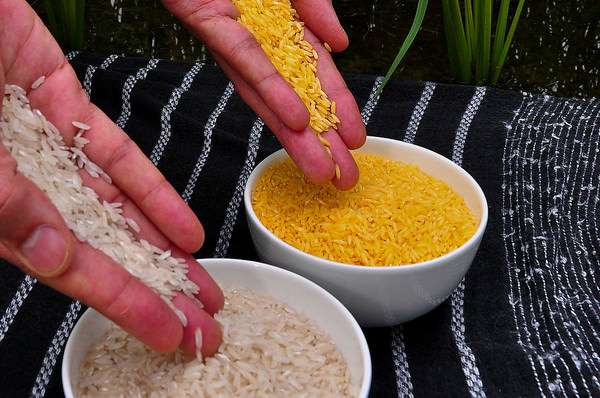Anti-Biotech Opposition to Golden Rice Has Cost 1.4 Million 'Life Years' in India Alone. Will Anyone Be Held Accountable?

Opposition to biotech crops, and the subsequent failure to adopt safe, healthy genetically modified crop variants, is causing mass human suffering all over the world.
The most obvious example of this is Golden Rice, which has been available since the early part of the last decade, but is not in regular use in any country. Golden Rice is a genetically altered rice strain built to address Vitamin A deficiency, which affects about 10 percent of the 3 billion people for whom rice is a staple food. That deficiency causes blindness in between 250,000 and 500,000 children each year, half of whom die within 12 months, according to the World Health Organization.
Golden Rice is cost effective and perfectly safe. But environmentalist groups like Greenpeace continue to oppose it. Over the years since its development, radical anti-biotech activists have waged violent crop-burning campaigns intended to wipe it out. Back in 2000, the threat was so fierce that the strain was being stored in a grenade-proof greenhouse for protection.
The sheer physical misery—misery that could have and should have been prevented—that has resulted from opposition to the rice has been immense, but also difficult to quantify. But this year, two agricultural economists attempted to estimate exactly how much it's cost, both in economic terms and in healthy lives lost. The results are pretty grim.
"Results show the annual perceived costs have to be at least US$199 million per year approximately for the last decade to explain the delay in approval of the technology," writes Justus Wesseler of Technische Universität München, Center of Life and Food Sciences in Freising Germany and David Zilberman of UC Berkeley. "This is an indicator of the economic power of the opposition towards Golden Rice resulting in about 1.4 million life years lost over the past decade in India."
What does the study's authors mean by "life years?" David Ropeik of Scientific American explains:
That odd sounding metric – not just lives but 'life years' – accounts not only for those who died, but also for the blindness and other health disabilities that Vitamin A deficiency causes. The majority of those who went blind or died because they did not have access to Golden Rice were children.
Ropeik argues that at this point we need to do more than tally the suffering. We need to assign blame, and hold those who have opposed Golden Rice so adamantly, for so long, on such flimsy justifications, accountable:
These are real deaths, real disability, real suffering, not the phantom fears about the human health effects of Golden Rice thrown around by opponents, none of which have held up to objective scientific scrutiny. It is absolutely fair to charge that opposition to this particular application of genetically modified food has contributed to the deaths of and injuries to millions of people. The opponents of Golden Rice who have caused this harm should be held accountable.
That includes Greenpeace, which in its values statement promises, "we are committed to nonviolence." Only their non-violent opposition to Golden Rice contributes directly to real human death and suffering. It includes the European Network of Scientists for Social and Environmental Responsibility, which claims the credibility of scientific expertise, and then denies or distorts scientific evidence in order to oppose GMOs. It includes the U.S. Center for Food Safety and the Sierra Club and several environmental groups who deny and distort the scientific evidence on GM foods every bit as much as they complain the deniers of climate change science do. It includes the Non-GMO Project, started by natural food retailers who oppose a technology that just happens to threaten their profits.
Reason's Ron Bailey has been writing about the "homicidal activism" of anti-biotech fanatics for years.
(Link via CEI's Greg Conko.)
